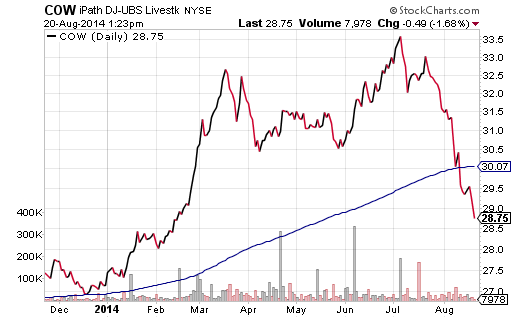What counts for an economy that primarily depends upon its consumers? Family income needs to increase beyond inflation. Otherwise, families find themselves with less purchasing power and, ultimately, those families spend less.
Since the U.S. economic recovery effectively began in July of 2009, inflation-adjusted wages have actually dropped 3%. In other words, at least in terms of purchasing power, families are no better off than when the recession had concluded.
A majority of economists have been puzzled by the data that they revere. Consistent jobs growth in 2014 would appear to signal improvement such that these folks expected retailer success. Yet the retail segment flat-lined in July. Those same analysts anticipated higher readings for consumer sentiment. Instead, sentiment dropped in August to a 10-month low (79.2). Perhaps the analysts could have focused on the quality of job growth (e.g., part-time, low pay, etc.) rather than the quantity (e.g., 200,000 per month).
Time and again, economy-watchers seem to overlook just how critical inflation-adjusted family income can be. Real wages have yet to rise in the last six months. Is that a big deal? Well, zero-percent growth in real wages over that time frame – at least for non-executive compensation – has not occurred in 22 years. The fact that the U.S. has only averaged about 2% GDP expansion since the 3rd quarter of 2009, rather than a more typical 3%, can partially be explained by the financial stagnation experienced by the family unit.
So why does the U.S. stock market continue to thrive? Few questions are as easy to answer these days. The Federal Reserve is still finishing up its “shock-n-awe” level of electronic money creation, and it is unlikely to abandon its zero-percent rate policy for at least a year (if not longer). It should be noted, though, that shortly after the completion of the first and second iteration of the Fed’s quantitative easing, stocks experienced dramatic falls from grace. As the Fed winds down its third iteration of quantitative easing here in 2014 – as hints about an eventual rate hike emerge – it is not difficult to imagine the same type of market tantrum alongside a few troublesome economic data points.
In truth, there are many signs of a weak U.S. economy beyond the aforementioned consumer sentiment gauge and the abysmal retail sales numbers. For one thing, the average expansion lasts 58 months, while the current expansion is at 62 months. The 10-Year U.S. Treasury bond yield has defied virtually all economists by dropping from 3.0% at the start of the year to 2.4%. And since the U.S. economy does not operate independently of other regions in the world, the euro-zone’s battle against yet another recession hardly bodes well stateside.
Still, there may be no greater sign of trouble around the bend than what is happening to key commodities like copper, oil and livestock). “Dr. Copper,” the base metal with a Ph.D in economics, is used in everything from homes to electronics to power generation. Yet its demand via iPath DJ Copper (iPath DJ-UBS Copper Subindex TR (NYSE:JJC)) has actually waned in 2014.
It should be noted, though, that there has been a noticeable turnaround since the March lows. Moreover, those lows occurred alongside a renaissance for demand in shares of Chinese equities. Indeed, China and a number of emerging markets may indeed be experiencing an economic resurgence, but trouble in Germany, France and other European nations may offset any progress for key base metals.
Now take a look at oil via United State Oil (NYSE:USO). One could have surmised that the threat posed by Islamic militants in Syria and Iraq would have a lasting impact on oil prices. The endless battles between Israel and Hamas? And what about geopolitical tensions with one of the largest non-OPEC oil producers in the world, Russia? None of those things have mattered when compared to fears of faltering economies and ongoing deflation in the euro-zone. In fact, USO is back below its 200-day trendline.
Of course, there is one area where commodities are still scoring big, right? Everyone knows that severe weather patterns around the country and around the globe caused food prices to skyrocket. Well, they might want to look at agricultural commodities lately. Very few have held onto the technical uptrends that they had built early in the year. And some, like iPath DJ Livestock (NYSE:COW), are falling down a mountain.
Granted, the commodity woes may be saying far more about global economic weakness than steadiness in the U.S. or resilience in Asia (excluding Japan). On the other hand, U.S. stocks have traditionally had a difficult time moving ahead in a vacuum. Add the perception that the Fed may not be able to maintain its ultra-easy monetary policy indefinitely, and the prudent investor may want to ratchet down on some of the risk.
Disclosure: Gary Gordon, MS, CFP is the president of Pacific Park Financial, Inc., a Registered Investment Adviser with the SEC. Gary Gordon, Pacific Park Financial, Inc, and/or its clients may hold positions in the ETFs, mutual funds, and/or any investment asset mentioned above. The commentary does not constitute individualized investment advice. The opinions offered herein are not personalized recommendations to buy, sell or hold securities. At times, issuers of exchange-traded products compensate Pacific Park Financial, Inc. or its subsidiaries for advertising at the ETF Expert web site. ETF Expert content is created independently of any advertising relationships.



